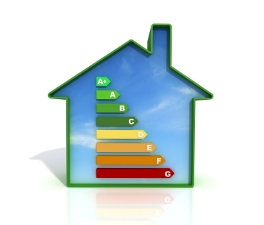Similar to the rating system introduced on white goods (washing machines, cookers etc.) the ber system was introduced to allow prespective tennants or purchasers of property to consider energy requirements when considering where they are going to live. The rating system allows people to quickly and easily compare the energy efficiency of dwellings ( click to see a ber cert)
Ratings can only be completed by qualified and registered assessors. For existing dwellings an assessors must visit the dwelling to determine among other: the size of the dwelling, the orientation, the materials it is constructed with, how it is heated, how the hot water is heated, the ventilation, what type of lighting is employed.
The assessors then uses the DEAP software tool to determine the rating. This rating is then logged onto the national database and the ber certificate issued. The certificate and advisory report are issued as a pdf file to the assessor. Provided the are no significant changes to the dwelling, a certifcate is valid for up to 10 years.
For new dwellings the certificate is calculated based on the construction plans.
The legislation for existing dwelling came into effect for any dwelling offered for sale or rent on or after the 1st January 2009. For new dwelling the legislation came into effect on planning applied for after 1st January 2007. The legislation also requires people building their own house to have a ber cert completed even if they do not intend to sell the property when it is complete.
The overseeing authority for building energy rating system is Sustainable Energy Authority of Ireland(SEAI). They maintain the national database and charge €25 to register a certificate. The summary of the results of a certificate can be viewed on the SEI website by either using the ber cert number or the MPRN number (this number can be found on the electricity bill for the property)
The ber certificate is also being introduced for commercial and public buildings. Overtime it is envisaged that the process will make people more energy aware, leading to being more efficient. This will in turn lead to a reduction in our CO2 emmisons and help meet our Kyoto commitments.
